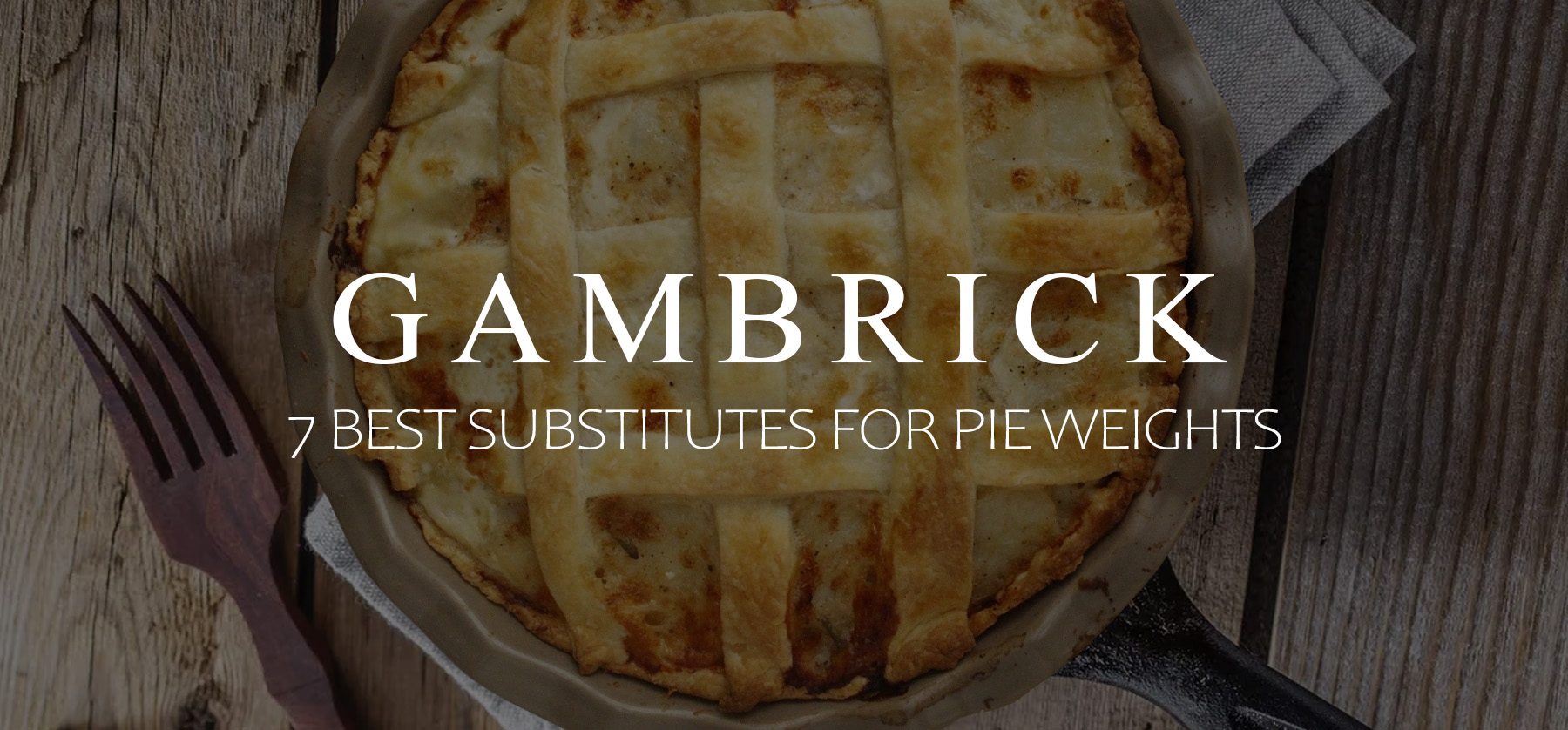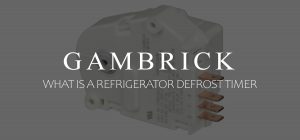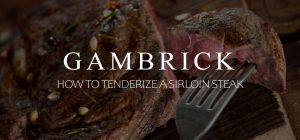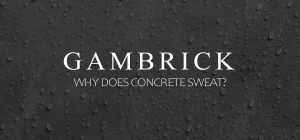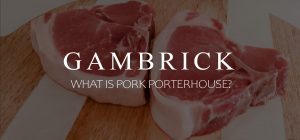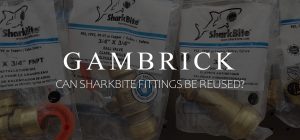7 Best Substitutes For Pie Weights
Flaky golden crust, juicy fruit filling or a decadent chocolate center with that perfect pie shape. Baking professional quality pies at home isn’t that easy. But it can be done. There’s nothing worse than when your crust comes out soggy, your filling is runny or the pie is burnt. Whether you’re making a summer cherry pie or a chocolate cream for the holidays, success is in the details. There are a few steps you can take to ensure your pies come out just like your favorite baker. The secret to making a delicious pie starts with a perfect pie crust. If you’re making a pie where the filling isn’t baked, you’ll need to blind bake the crust using pie weights. But don’t worry if you don’t have them, there are some great substitutes for pie weights that work just as well.
Blind baking is when you pre-bake a pie or tart crust without the filling. It can either be partially or fully baked depending on the recipe. The filling is added to the pre-baked crust later, and then baked further if it’s required. Some pie recipes, such as chocolate pudding pies, don’t bake the pudding. So the crust is baked first and then filled with pudding later. Pie weights are needed to keep the crust’s shape while it bakes because there’s no filling inside.
Don’t worry if you don’t own pie weights, there are plenty of substitutes that work really well.
The 7 best substitutes for pie weights are:
- Uncooked Rice, Corn or Beans.
- Steel Balls.
- Popcorn Kernels
- Sugar.
- Marbles.
- Smooth Stones.
- A Smaller Pie Form.
Ahead we’ll take a look at each substitute in more detail along with a closer look at blind baking and when and why you might need to use pie weights.
What is Blind Baking?
Blind baking is when you pre-bake a pie crust without any filling inside. In other words you bake just the crust all by itself. It’s a very important step for any type of custard-based recipe like a pudding pie because the pudding doesn’t get baked. The crust gets blind baked and then filled with pudding later.
Blind baking prevents the pie crust from getting soggy or losing it’s shape. Wet fillings can make a crust soggy if you put them in too soon. But blind baking hardens the crust so wet fillings can’t ruin it.
One thing you definitely do not want to do is add a liquid filling to an unbaked pie crust. The crust will get soggy, crumble apart, lose it’s shape, or cook improperly. The way you do it is by baking the crust first, without any filling, and then adding the filling later.
Pie crust can be either partially or fully blind baked depending on the recipe. If the recipe calls for a partial blind bake, you would bake the crust alone, remove it from the oven, fill it, and then finish baking.
To blind bake a crust, roll out your dough with a rolling pin and then place it into your pie plate. Crimp the edges with a fork or your fingers to create your favorite look.
The problem with blind baking a pie crust is that without a filling to hold the crust in place, it loses shape. This is resolved by using pie weights. Pie weights take the place of filling when you blind bake.
Line the crust with foil or parchment paper and then weigh it down with pie weights. The weights hold the pie’s shape and prevent it from puffing up, crumbling or sagging in the oven.
Many recipes call for pie weights, but don’t worry if you don’t have them. There are plenty of great substitutes that work just as well. We’ll list the best ones along with a few that don’t work very well later in the article.
When Should I Blind Bake?
There are a few situations when a crust should be blind baked. If your pie recipe uses fresh fruit, cream or chocolate pudding, the crust is baked but not the filling. The pie crust or tart shell will be fully blind baked before the filling is added.
Other fillings may require some baking, but at a lower temperature or shorter time frame than the crust. For example, custard pies require baking, but they can curdle if baked too long. In this case you would blind bake the crust using pie weights for about 3/4 the required time, then remove the pie from the oven and fill it with custard to finish baking.
A pie crust can become soggy if the filling is too wet. This is common with quiches, pudding pies, custard and fruit fillings. Blind baking the crust before you insert the filling prevents sogginess because moisture doesn’t absorb into a baked crust.
Blind baking with pie weights helps create a crisp, fully formed crust that you can later fill with all sorts of ingredients.
In some cases I don’t even fill my crusts right away. I bake a few in the morning and let them sit until night-time when I fill them with fruit, custard or pudding.
Knowing the best substitutes for pie weights can help when your baking a lot because commercial weights are expensive. A pack of ceramic balls costs around $10 and I usually use 4 pack for a pie. I have enough for one pie but when I’m baking 3 or 4 at a time I need other things that will work instead. Corn, dry beans, sugar and rice are all great alternatives.
What Are Pie Weights?
The problem with blind baking is that the pie loses it’s shape without a filling. The dough can puff up as steam gets trapped inside the dough’s gluten structure. This leads to an uneven or deformed crust with over or under-baked areas. Shrinkage can also happen along with falling or totally collapsing sides. All of this results in an ugly looking pie that’s hard to fill.
If you want to bake pies like a professional then you’ll need to use pie weights.
Pie weights solve all of these problems by filling the crust during blind baking. They take the place of a pie filling and hold the crust in place. When you take the pie crust out of the oven and remove the weights, you’ve got a perfectly cooked and formed pie crust that’s ready for filling.
Commercial pie weights are typically made from metal or ceramic. They work great but are pretty expensive. Using cheap substitutes like dry rice, beans, popcorn kernels or sugar is what I recommend. Most of us have these ingredients lying around the kitchen anyway.
Pie Crust Liners
There are two types of pie crust liners that you can use with pie weights. Aluminum foil and parchment paper. Both types of liners add a protective layer that separates the weights from the crust. But there are pros and cons of both.
- Aluminum Foil: Foil is a metal which absorbs and transfers heat. This is great because it helps cook the crust from the inside. Whenever I use a foil liner I always get a more evenly cooked crust with better color. But you have to use it with the right filling. My favorite is sugar. You only want to use foil with weights that don’t absorb and conduct their own heat like sugar, rice, corn or beans. Don’t use foil with ceramics or metal weights.
- Parchment Paper: A paper crust liner offers the same protective layer between the weights and crust, but it doesn’t absorb and radiate heat. This makes it a better choice when your using ceramic or metal weights.
All of the best substitutes for pie weights, and commercial pie weights, require a liner between the weights and crust. Make sure to use the right liner to go with the weight you choose. If it conducts and radiates heat use paper. If it doesn’t then use foil.
Alternatives To Pie Weights
Commercial pie weights are usually made of ceramic or metal, but there are plenty of great alternatives that you can use instead. A sheet of parchment paper or aluminum foil is placed over the crust and the weights are then placed on top. It’s very important to always keep this thin layer between the weights and the crust.
The paper or foil prevents the weights from sticking to the dough. This makes removal of the weights easier.
Pricking the dough with a fork, known as docking, is sometimes recommended as an alternative to using pie weights. It helps release the steam created during baking which can reduce puffiness. But docking doesn’t help the sides of the crust keep their shape. You can still end up with a soggy, misshapen or unevenly cooked pie crust. I recommend using pie weights or a good substitute even when you dock the pie.
Luckily there are plenty of great alternatives to pie weights that you can use as a substitute. Most of which you may already have lying around the house.
1. Dried Rice, Corn or Beans
Baking beans are simply dried beans that are used as pie weights. Rice, corn or similar dried foods can also be used. The great thing about dried ingredients is that you probably already have them in the house. They work just as well as commercial ceramic pie weights and can be re-used over and over again.
Dried ingredients don’t radiate heat like steel or ceramic does. So the weights will only hold the crusts form and not help with baking. To compensate for this, use an aluminum foil liner between the crust and weights.
Rice: If you use rice as a pie weight, make sure that it’s uncooked. Cooked rice will get fluffy lightweight. Rice does a good job of filling the crust which helps it cook evenly and keep a nice form. But it can be a pain to clean up.
Corn: Using corn is very similar to rice, it works well, cooks an even crust and keeps the form. But the kernels are small and harder to work with then beans.
Dried Beans: These are one of my favorite pie weight substitutes. They’re just the right size and shape to weigh down a pie crust which creates a good form and an even bake. To be honest, I don’t know why they even sell ceramic weights because beans work so well. And I always have a bag of dried beans in the pantry so they’re very convenient. Dried beans come in a variety of sizes so choose a small round one. They’ll pack tighter into the crust which works better.
Even though smaller dried goods are harder to clean up, they actually work a little better. They pack tighter into the crust because of their small size so the pressure is more evenly distributed.
Whenever I use dry ingredients and foil I always get a nice form with a pretty golden brown color. Just make sure you pack the ingredients into the crust evenly. This creates an even pressure on the bottom and along the sides.
2. Steel Balls
Small steel balls have the added advantage of holding the crust’s form and radiating heat. This helps cook the crust from the inside which results in a more even bake. A few great bakers have told me this is their secret to blind baking a great pie crust. But you have to adjust your baking time a bit since the balls will help bake the crust.
Use a small size ball. They’ll fill the crust better. If you’re used to using aluminum metal pie weights, steel balls are very similar.
Make sure that any steel items you use are clean, and oven safe.
I’ve tried steel balls as a substitute pie weight and they’ve worked really well. I’ve always got an evenly cooked crust and a nice color. But you need to use small balls. if they’re too big you’ll end up with uneven cooking.
The great thing about steel balls is that you can use them over and over again. They’ll never go bad no matter how many times you bake with them.
Make sure to use parchment paper with steel. They conducts heat so you don’t need the foil.
3. Popcorn Kernels
A bag of popcorn kernels can be a great substitute for pie weights. They work just as well, bake the crust evenly and hold a great form.
Popcorn kernels are different than dried corn. Only one variety of corn kernel called Zea mays everta is made into popcorn. It looks just like a typical corn kernel but it’s the only one that can pop into a delicious snack. Both regular corn and popcorn kernels make great substitutes for pie weights.
As with other dry pie weight substitutes, I recommend using foil as a liner.
The only downside to using popcorn kernels as a pie weight substitute is that they’re very small. This can make cleanup harder. I always manage to get the small ingredients like kernels, rice or sugar all over the place when I bake. But they’re cheap and you can store and use them again and again.
I actually use popcorn kernels as a pie weight a lot because I always have them in the kitchen. But they dry out in the oven and won’t pop later so don’t plan on eating them after your done baking.
4. Sugar
I love using sugar as a pie weight substitute. In fact it’s probably my favorite and the one I use the most. Sugar is a staple ingredients that’s found in just about every baker’s pantry including my own. Simply mold some aluminum foil around the pie crust and up the sides then fill it with sugar.
Sugar is very fine and fills the entire pie crust evenly. This ensures the dough is held firmly in place and evenly cooked. Every time I blind bake a pie using foil and sugar I get great form and a beautiful golden brown color. It never fails.
One of the best things about using sugar is that you can use it in other recipes later. I recommend limiting it to a few blind bakes though. The taste will be a toasted caramel flavor which works well in many recipes.
Granulated sugar makes a great substitute for pie weights, but it’s fine. The smaller the weight the better a pie weight it is, but it’s harder to clean up. I always manage to spill sugar all over the place including my crusts. This isn’t necessarily a bad thing but you’ll have to be extra careful.
Sugar is very fine which means it provides really even coverage with a good amount of weight. This helps keep the crusts form and ensures an even bake. I also love that I can re-use the sugar later because I hate wasting ingredients.
If you try sugar as a pie weight substitute, I recommend using aluminum foil and not parchment paper. Foil always gives me the best color. Parchment paper is great at keeping sugar off the crust, but I never get the same browning as when I use foil.
The combination of heat conductive foil with the even weight and fine texture of sugar helps bake the crust evenly.
5. Marbles Or Smooth Stones
Another great substitute for ceramic pie weights are marbles or smooth stones.
Marbles: They’re round, evenly sized, a good weight and can handle heat. Just make sure you use real marbles and not cheap plastic ones. Use a small marble that’s similar in size to a steel ball or dry bean. Not the really big marbles that are around an inch in diameter. Marbles absorb and transfer some heat so they’ll help bake the crust from the inside.
Stones: Smooth stones, like what you get from a rock tumbler, work great as a pie weight. Just make sure you don’t use rocks with a shard edge. They have to be totally smooth. Stones absorb and transfer heat really well so they help bake the crust. Make sure you take this into account when you set the timer.
I use parchment paper along the bottom and sides of the crust. Since the stones and marbles absorb and radiate heat, they’ll help bake the crust. Once the paper is in, fill the crust evenly with either marbles or stones. If the stones are unevenly shaped, and they probably will be, make sure to fill the crust with as little voids as possible.
Since stones are usually uneven, you can stack them along the bottom and side walls of the crust. This makes them a little easier to work with than marbles and most other pie weights. With other weights you have to fill the entire pie to support the sides.
6. Baking Chain
A baking chain will work as a pie weight substitute but they’re light. They lack the weight part of a pie weight. And this is the main downside to using them.
Coil the chain inside the pie crust as evenly as possible. Since the chain is connected, it won’t naturally fill the void like marbles, dried goods, stones, sugar or steel balls will.This takes time and isn’t as easy as simply pouring sugar into the liner.
Pay special attention to the sides because this is where the crust needs support. Without pressure, the sides can crumble, slump or completely fall in. This is where the chain usually fails. But you can make it work if you’re careful about how you coil it into the crust. Make sure pressure is all around the edges.
Pie dough can bubble up between the gaps of the pie chain’s coils so pack it tightly. Make sure to cover the entire bottom and sides evenly. If you leave voids between the chain it can result in uneven baking.
Honestly, baking chains aren’t my favorite thing to work with. But they work fine if you take your time coiling them into the crust. I’ve used them before and had good results, but it takes extra time I’d rather spend baking.
The good thing about chains is that they’re easy to clean up. You don’t have to worry about spilled ingredients. And they can be re-used over and over again.
Depending on the chain I may use parchment paper or foil as a liner. If the chain is heavy I’d use paper because a heavy chain will conduct more heat. But if you’ve got a really light chain I’d use foil.
7. A Smaller Pie Form
Another one of my favorite substitutes for pie weights is a smaller pie form. Make sure to use foil or parchment paper first. Then insert the smaller pie dish right into the pie crust. The top dish will keep the bottom crust from puffing up and will retain a good form.
When you use two forms, the pie crust can be inverted and baked upside down on a baking tray. Gravity helps hold the crust together. This method works great, but the upper edges of the crust tend to become flatter since they’re sitting on the tray’s surface. I like the look on some of my pies but not all. Experiment and see what you think.
A smaller pie form as a weight prevents puffing, and shrinkage of the sides. Just make sure the two pie forms are exactly the same shape, only different sizes. If there are voids between the crust and 2nd form, the crust could plump up to fill it.
If you use a metal pie form, it will conduct some heat. This is how I like to do it. Baking the crust from the inside helps develop a nice brown color and a good crisp. It’s similar to using foil and sugar because you get metal conducting heat and an even pressure all around the sides and bottom of the crust. In this case I use a parchment paper liner instead of foil. However, if I use a pie plate that doesn’t conduct much heat, I use foil.
Tips
- Chilling or freezing your crust before blind baking can help prevent puffing. It also reduces the chance that your foil or parchment paper will stick or that your fluting will be damaged.
- Pricking your crust with a fork is a good idea even when using pie weights. Just don’t do it with very wet fillings. The pricks can help release steam which prevents puffs.
- Always place a layer of foil or parchment paper between your crust and the weights. This stops them from sticking, makes removal easier, and prevents flavors or smells from transferring to the crust.
- If the bottom of your blind-baked crust comes out soggy using aluminum foil, try parchment paper instead.
- Make sure that your pie weights are evenly distributed over the surface of the crust and pushed to the sides.
- Commercial pie weights can be heavy so adjust the quantity of weights you use accordingly. You don’t want so much weight that you depress into the pie crust which leaves dimples.
- Try removing your weights and foil or paper half way through blind baking and then continue baking without them. This helps develop a crisp, golden crust.
- If the sides of your crust are burning or baking faster than the bottom, make sure to fully cover them with foil or purchase a silicone pie crust shield.
Pie weights and their substitutes are just a part of baking great pies. Other techniques should be used along side the weights to ensure a perfect crust. Manage baking times well and always pay attention to temperature.
Every pie is different. Don’t be afraid to experiments using different weights for different crusts.
Substitutes For Pie Weights I Don’t Like
I tested a few other pie weight substitutes but didn’t like them. Here’s a list of what they were and why I’d avoid them.
1. Metal Chain
Although a metal baking chain works fine if you place it very carefully inside the crust, it’s a pain to do it. Why bother perfectly coiling a chain inside the crust when all I need is some foil and sugar?
Chains are generally light so you need a lot of them. I’ve heard of bakers using a pie chain 10 feet long. But I don’t understand why. Sugar, another pie form or dry ingredients work just as well with much less effort. If all you have is a chain, it’ll work fine as a pie weight substitute which is why it’s on my list, but It’s my least favorite.
2. Single Metallic Pie Weight
You can buy a pie weight as a single one piece tool and not ceramic balls.
It weighs about 0.3 pounds and has a perforated metal disk encircled by silicone flaps. To use it, place it over the base of the pie crust with its flaps flaring up against the sides of the crust. The main center disk holds the center of the crust down while the flaps put pressure on the sides.
I don’t like using this type of pie weight at all. It’s too light and doesn’t provide enough pressure to blind bake a crust how I want. Every time I use it the pie crust slumps, puffs and cooks unevenly.
The pie weight also made impressions in the base of the pie crust which I don’t like. Even though you don’t see it one the crust is filled, I don’t like the crust to be indented by my weights.
Because some parts of the weight are made from metal and others from silicone, it heats unevenly. The metal part stores and releases heat but the silicone flaps don’t. This causes the crust to bake different than the sides. Unevenly baked pie crust is definitely something you want to avoid.
3. Light Weights
This is general rather than a specific type of pie weight, but I don’t like it when pie weights are too light. This can also refer to how you use the weights. Pack them into the crust enough to create a good amount of bottom and side pressure.
They’re called pie weights for a reason. The general idea is to use the pie weight in place of a filling. Fillings completely fill the inside of the crust with even pressure. You need to reproduce this level of support with your pie weights. So use something heavy enough to mimic an actual pie filling but not too heavy that it depresses the crust.
Parchment Paper Vs Aluminum Foil
All pie weights require either parchment paper or aluminum foil between the crust and weights. But which is better? I usually prefer foil. But it depends on what type of weight you’re using.
Parchment paper does a good job at keeping the weights off the crusts surface. But it doesn’t absorb or transfer heat. So you don’t get the baking benefit. However this doesn’t matter if you’re using a weight that absorbs and transfers heat. For example, stones or metal balls absorb and transfer heat really well. They help bake the crust from both sides. In this case you don’t need foil because the weight is doing the baking.
Aluminum Foil is different because it absorbs and transfers heat all by itself. This is the better choice if you’re using dry ingredients like corn, beans or sugar. Since these ingredients don’t absorb or transfer heat to the crust, you need foil to do it. My favorite substitute pie weight is sugar with aluminum foil. The sugar provides a great even pressure all around and the foil helps bake the crust. I always get an evenly cooked crust with great color.
My Favorite Commercial Pie Weight
If I’m going to buy pie weights, I like Mrs. Anderson’s Ceramic Pie Weights. They perform just as well as metal pie weights, but cost about half as much.
Each package contains 1 cup of weights, or about a half a pound. To fill an entire pie crust with enough weights to properly blind bake the pie, I use 2 pounds or 4 packages. This is important if you go buy them. Make sure to get enough to fill the pie you’re baking. If you don’t have enough they won’t work properly.
You can use them with either parchment paper or aluminum foil, but I prefer the paper. Ceramic will transfer heat so parchment paper always works fine for me.
Every time I’ve used ceramic weights, the crust didn’t puff, the sides didn’t slump and I always got great color.
An annoying thing about the weights is that you can’t buy them in bulk. They come in small containers but you need a lot more than one container can hold. I recommend ditching the containers they give you and using a large glass jar to store them in.
Pennies As Pie Weights
Believe it or not, another one of the easiest substitutes for pie weights are pennies. Or any type of change. I just prefer pennies because they’re smaller and cheaper.
If you’re like me and have a change bowl in the house, then you’ve got lots of pennies. They conduct heat really well which helps bake the crust but they’re an odd shape. They don’t fall well like round weights, so you could get some indentations in the crust. To prevent this I use multiple layers of parchment paper. The thicker the paper the less likely it is that your pennies will dent the crust.
Make sure you wash the pennies really well in soapy water and don’t let them touch the crust. Even when thoroughly washed I still don’t want money touching my food. But it’s not hard to keep them off the pie as long as you use enough paper.
Summary: 7 Best Substitutes For Pie Weights
Flaky golden crust, juicy fruit filling or a decadent chocolate center with that perfect pie shape. Baking professional quality pies at home isn’t that easy. But it can be done. There’s nothing worse than when your crust comes out soggy, your filling is runny or the pie is burnt. Whether you’re making a summer cherry pie or a chocolate cream for the holidays, success is in the details. There are a few steps you can take to ensure your pies come out just like your favorite baker. The secret to making a delicious pie starts with a perfect pie crust. If you’re making a pie where the filling isn’t baked, you’ll need to blind bake the crust using pie weights. But don’t worry if you don’t have them, there are some great substitutes for pie weights that work just as well.
Blind baking is when you pre-bake a pie or tart crust without the filling. It can either be partially or fully baked depending on the recipe. The filling is added to the pre-baked crust later, and then baked further if it’s required. Some pie recipes, such as chocolate pudding pies, don’t bake the pudding. So the crust is baked first and then filled with pudding later. Pie weights are needed to keep the crust’s shape while it bakes because there’s no filling inside.
Don’t worry if you don’t own pie weights, there are plenty of substitutes that work really well.
The 7 best substitutes for pie weights are:
- Uncooked Rice, Corn or Beans.
- Steel Balls.
- Popcorn Kernels
- Sugar.
- Marbles.
- Smooth Stones.
- A Smaller Pie Form.
If you have any questions or comments about baking, email any time.
